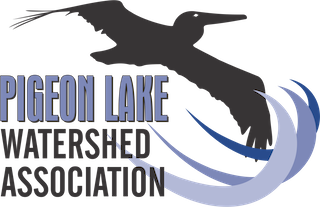1990’s - Fish Stocking Efforts
“Five species of sport fish inhabit Pigeon Lake, including burbot, lake whitefish , northern pike, yellow perch, and walleye. Sucker and forage fish species, including white sucker, spottail shiner, emerald shiner, trout perch, and Iowa darter have also been documented within the lake.
Fish species in Pigeon Lake are subject to environmental and anthropogenic pressures such as habitat modification, overfishing and hypoxia due to eutrophic conditions. Northern pike and walleye populations are often used as indicators of the fisheries status within lakes due to these species’ value to the recreational fishery, position atop the aquatic food web and sensitivity to stressors such as angling.
The population of walleye in Pigeon Lake is currently sustainable, although this is due to intensive stocking efforts in the 1990s which brought the population back from extirpation. Populations of northern pike in the lake are considered collapsed, likely a result of a combination of factors, including the extirpation of the species in the 1950’s, loss of littoral spawning and feeding habitat, direct competition with reintroduced walleye, and overfishing. According to Alberta Environment and Parks, as of 2015 walleye populations within Pigeon Lake are at Very Low Risk while northern pike populations are considered Very High Risk due to weak recruitment and low survival.
Results of the shoreline and aquatic biophysical assessment indicate that the entirety of the Ma-Me-O Beach shoreline is impaired by human disturbance. In addition to extensive shoreline disturbance, the survey documented very shallow waters with sand-dominated substrates and a nearly complete lack of emergent and submergent vegetation. These conditions are indicative of low sport fish habitat, especially for Northern Pike, which rely heavily on vegetative cover for spawning, rearing and foraging. Spawning habitat for walleye (shallow cobble shoals) was not present within the study area. Areas with sand-dominated substrate may be utilized as travel corridors between areas of more cover, as well as by certain forage fishes, such as trout-perch which feed nocturnally in open, sandybottomed shallows.”
Pg.11 of the Summer Village of MA-ME-O BEACH Bylaw No. 375 | November 2020 MUNICIPAL DEVELOPMENT PLAN
